In the Sonic universe there is nothing more iconic than the zone that started it all: Green Hill. Any and every SEGA and Sonic fan should know the look and layout of this zone, specifically the first act and even more specifically the first few moments experienced by players. I’m talking about the line of rings, followed by the platform with an item box above and a Motobug below, a Buzz Bomber enters from the right of the screen, passing a palm tree with a spring hidden inside. For many fans, this was their introduction to Sonic as a character and as a franchise. Sonic Team knew the importance of the first zone, as (according to the Sonic Jam strategy guide) it took the team six months to perfect the look and design of Green Hill. In the years that followed, the opening layout of Green Hill reappeared a number of times. In this week’s SEGA Five, I’ll look back on those times, noting the strengths, weaknesses and possible reasons for referencing the classic layout.
Before I get into the five moments, I wanted to talk about how Hirokazu Yasuhara, the level designer for the first Sonic game, was a complete genius in these important early moments of the game. The image above shows the start of act 1 (if the giant red START didn’t already tell you that), and within the short span of the stage, players are introduced to just about every important aspect of the gameplay. First there is a line of rings, to obtain these the player must jump to get them. Right there the ring collecting begins and players are now accustomed to jumping. Next comes the platform, which offers up a high and a low that players can explore. Below is a Motobug, which either hurts players (which in turn teaches how taking damage works) or introduces players to a rolling attack or an aerial spin attack. Meanwhile, above is an item box containing ten rings, as well as a Buzz Bomber which flys towards the player. Players instantly learn to spin attack both item boxes and enemies. Finally, if players happen to jump towards the palm tree they’ll encounter a hidden spring leading to some more rings above. So within seconds, players learn about: jumping, rings, item boxes, alternate routes, platforms, land enemies, air enemies, methods of attack, taking damage, springs and the possibility of secrets within the stage environment. Yasuhara basically created a mini-tutorial right from the get-go, with no need for Omochao or an entire stage dedicated to teaching the basics of gameplay. Now, onto the homages.
Sonic Adventure 2
While elements of Green Hill reappeared numerous times between 1991 and 2000 (Sonic the Fighters and Sonic Jam’s Sonic World to name a few titles), it wasn’t until Sonic Adventure 2 that the stage itself was referenced right down to the layout. A fully 3D Green Hill act 1 stage was the reward for those who obtained 100% completion of Sonic Adventure 2. Green Hill was, of course, chosen because Sonic Adventure 2 was released on Sonic’s 10th anniversary. Being a 3D game, Sonic Adventure 2 altered the stage to suit the modern gameplay style, but all the recognizable moments remained. The major difference was that platforms that appeared to be right above the player in 1991 were set back in Sonic Adventure 2, and what appeared to be a straightaway in 1991 was a twisted path in Sonic Adventure 2.
The opening moments of the stage were almost identical to the original, with the camera positioned as though the stage is 2D before swooping behind Sonic as the player runs forward. The three rings in the air can be obtained the conventional way by jumping or by using the lightspeed dash ability. Unlike the 1991 version, there is a second string of three rings before the player reaches the platform, which is now set back into the stage. The item monitor is there, albeit in the modern bubble design, and a 3D Buzz Bomber flys in before the player reaches the spring hidden in the palm tree leading to rings. Unfortunately, Motobug is absent from his usual spot on the ground and is also absent from the rest of the stage. Odd that Sonic Team would recreate everything BUT Motobug and Newtron.
Sonic the Hedgehog 4
In 2010 SEGA made a bold move by bringing the numbered series back to home consoles by way of Sonic the Hedgehog 4: Episode 1. Personally, I was really excited when it was announced. Of course, many fans argued wether the game should be dubbed “4”, given how long it has been since the third game, but my argument was this: Between Sonic 3 & Knuckles and 2010, there were no 2D Sonic games released to home consoles. 2D Sonic games were portable only. So if SEGA were to bring 2D Sonic games back to consoles, resuming the numbering made sense. I could go on, but what I’m getting at is that Sonic 4 set out to be a return to the 2D series. What better way to tell players that “2D Sonic is back” than with the original opening moments of Green Hill making their return in Splash Hill Zone, which was a combination of Green Hill, Emerald Hill and shiny plastic.
Splash Hill act 1 began with the string of three rings in the air, followed by another string of three on the above platform leading to the item box. Both Buzz Bomber and Motobug returned with new designs, and players could now destroy them with the homing attack if they wanted. The one missing element was the spring hidden in the palm tree. In fact, Sonic 4 didn’t have any springs hidden in palm trees. Still, it had Motobug which is a fair trade.
Sonic Colors
Just a month later, another Green Hill homage occurred in Sonic Colors for the Wii. The multiplayer mode, known as Sonic Simulator, referenced the original Sonic 1 stages by way of abstracted layouts of the original stages. SEGAbits was the first site to notice this. The first of these stages, aptly colored green, was an abstracted Green Hill Zone act 1. All the elements were there, but they appeared only as shapes. The act omits the string of rings at the start, and begins with the platform. Above are six rings and below are three. An Egg Pawn replaces Motobug and a Buzz Bomber flys in from the right. It’s simplified, and obscure, but it is definitely a recreation of Green Hill act 1. Just check out the stage maps compared.
Sonic Generations
Perhaps the most well known Green Hill act 1 homage was in Sonic Generations. Not only did Green Hill itself return, for the first time since 2001, but also the entire stage was redesigned to suit the modern look of the series. Also, both classic and modern Sonic ran through brand new layouts taking place within the zone. Before act 1 went off in a whole new direction, however, it began with the original introductory layout and for the first time every element returned. There was even the second string of three rings, which has oddly become a constant in many homages to the layout despite the original never having this second string of rings.
Sonic Generations also appeared on the Nintendo 3DS (forgive the quality of the screenshot above), and the one stage that was shared between the 3DS and the HD versions of the game was Green Hill Zone. The entire first act follows the original 1991 layout, and as such every element is in place. No additions, no changes. So of all the homages, it can be said that the 3DS is the most similar to the original.
Sonic the Hedgehog – 8-bit
I thought I’d end this SEGA Five by jumping all the way back to 1991. In the same year that Sonic debuted on the Genesis and Mega Drive, Sonic the Hedgehog also appeared on the Game Gear and Master System. The Genesis and Game Gear versions are very much two different games, only sharing a few zones that are only similar in graphics and names. Zone layouts, music and many other elements are completely different. But, despite the differences, a variation of the 16-bit Green Hill intro appears in the Game Gear version. Sonic first encounters a string of rings, followed by Motobug, then a larger cluster of rings next to a platform with an item box on top. No Buzz Bomber or hidden spring, but it’s similar enough that it’s possible the developer was echoing the 16-bit layout.
In the comments, feel free to share your thoughts on Green Hill homages. Are there too many? Just enough? At least Sonic isn’t like Mario, paying homage to Mushroom Kingdom in every single game.
Ad:

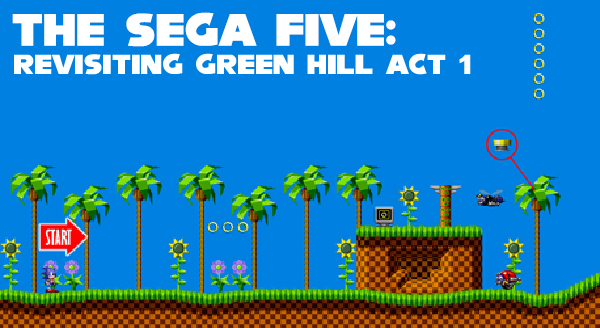

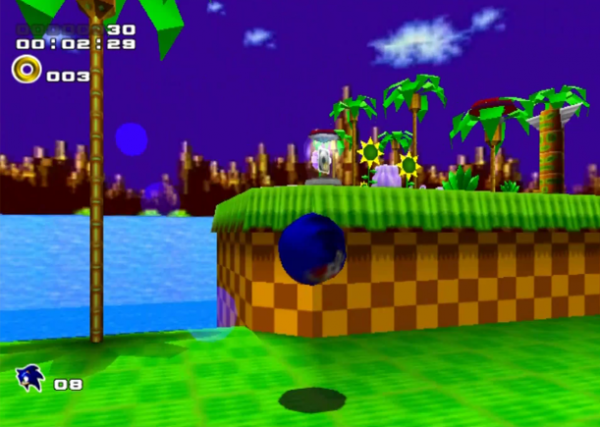
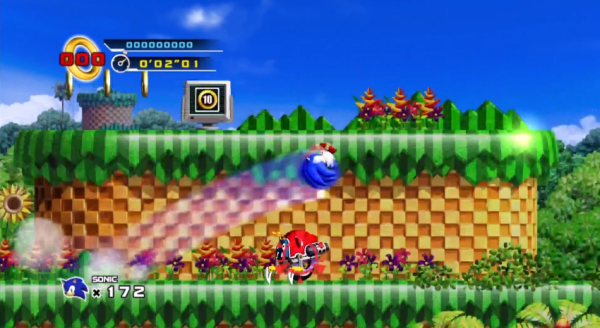
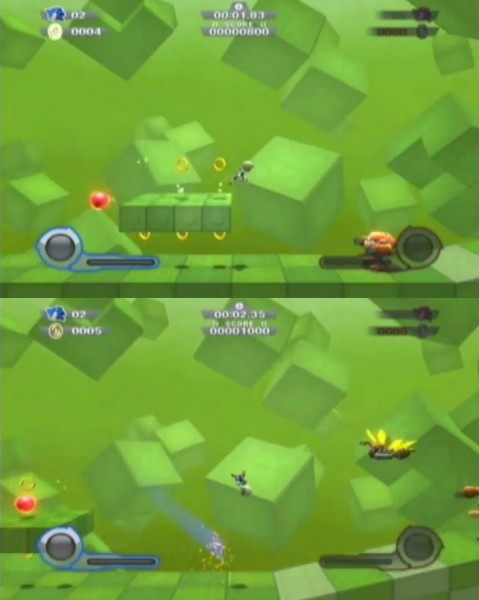
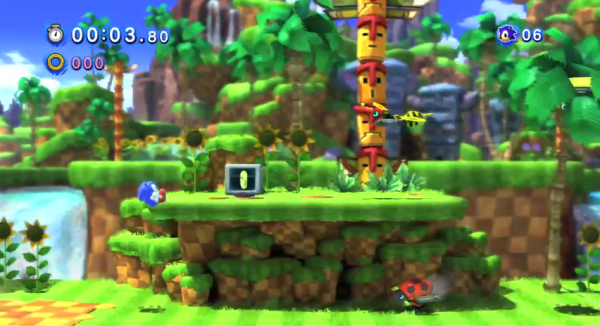
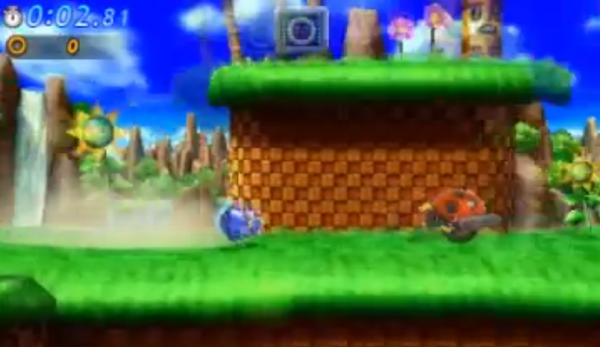
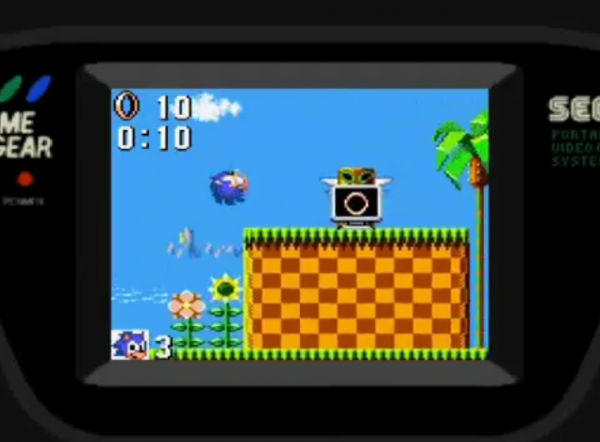



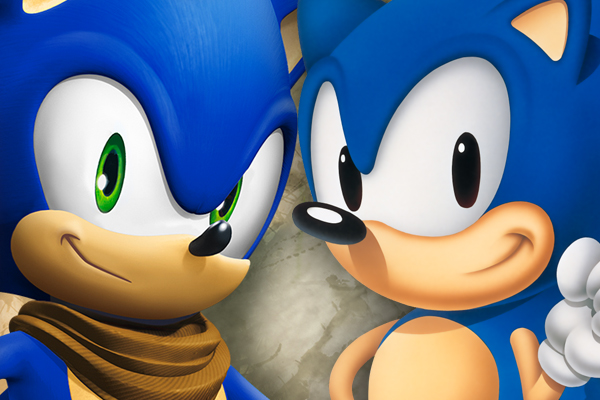

I didn’t even mention the totem pole, which appears in the original, SA2, Generations HD & 3DS and 8-bit.
The intro to Green Hill was perfectly crafted for people who were playing Sonic the Hedgehog for the very first time. Within five seconds you have a chance to learn the basic of collecting rings, running too fast and being careless enough to lose those rings to a Motobug, recover and kill the Motobug while invincible, learn to jump to a higher platform, obtain the ring box to learn the basics of item boxes, kill an air based enemy, and use a spring. They were able to jam a tutorial into five seconds and it worked amazingly.
The spring in a palm tree also taught them that the game is prone to secrets. Like the later breakable walls and hidden passages.
I think that the ammount of homages is okay because they really give memories of what fans used to play all the time on the Genesis. It seems like Green Hill Zone is the only one that’s been brought back at least 3 or more times. Always seeing Green Hill Zone makes me glad I’m a Sonic fan. 🙂
Yes, Yasuhara is a genius… who knows when to copy another genius… Miyamoto in this case.
Don’t talk shit. Did Miyamoto design the stages in Sonic 1? No. How the hell can you steal what doesnt exist? Yasuhara’s work took real skill and talent. It wasn’t something that you can steal, considering somehing like a Sonic game never existed before that, nor are Mario and Sonic stage design even 1:1. Again, don’t talk shit.
Super Mario Bros. starts the same way as Sonic the Hedgehog, the very first scene being a perfect playable tutorial of the entire game mechanics. It’s the ABC of platform gaming. I’m a Sega fan just like you, maybe even older, from the Master System days, but this don’t makes me blind to gaming history. Sorry, but you’re the one talking shit.
Wow, I didn’t actually think it was a tutorial like that!
It’s iconic, yet it’s simplistic! Genius!
I think the latter Acts are more iconic though as they provided us with the intro of spikes, that loop-de-loop and of course, Robotnik!